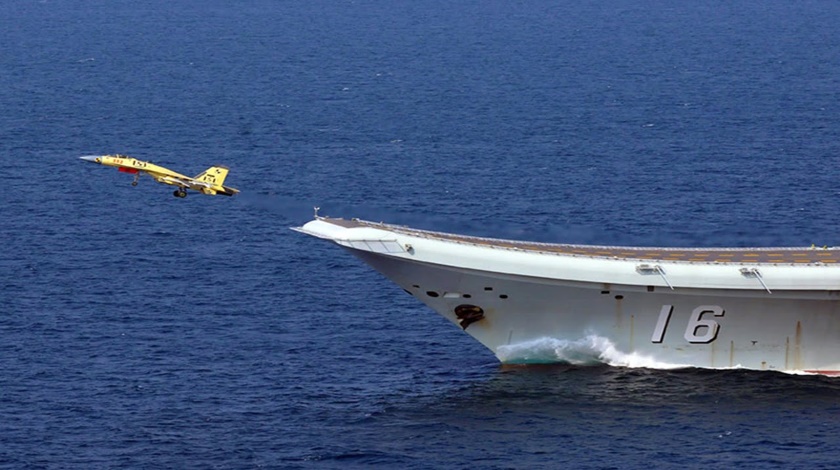Photo: YouTube.com
Reading Time: 3 minutesChina’s first aircraft carrier has this week engaged in public live-fire exercises, flexing its own weapons as well as those of its fully armed combat aircraft.
Beijing has declared Liaoning to be ‘fully operational’ and ready for combat after three years of testing, training and evaluation. Now it has set about proving this is so.
State-run news agency Global Times this morning released a statement and pictures showing the vessel demonstrating the use of live weapons.
Liaoning, originally bought from Ukraine in 1998 under the premise of being converted into a floating hotel and casino, marks a major step forward in the international influence of the People’s Liberation Army (PLA).
Beijing has several new aircraft carriers under construction. One, an improved version of Liaoning, is due to be launched within weeks.
But the spectacle of flying missiles and cannon shells conducted in the Bohai Sea adds to Beijing’s projection of determination to assert its sole sovereignty over the disputed South China Sea.
The news comes just a day after the revelation that China had armed its controversial artificial island airfields and harbours with anti-aircraft and antimissile guns — despite reassurances that it would not ‘militarise’ the facilities.
Overnight, the ministry of defence in Beijing defended its move, saying “You wouldn’t prepare a slingshot if others swaggered through your doorway?”
FULLY ARMED AND OPERATIONAL
Liaoning’s political commissar Li Dongyou was reported as saying the carrier had “real combat capacity.”
“As a military force, we are always prepared for war and our combat capacity also needs to be tested by war … At this moment, we are doing our best to promote our strength and use it to prevent war, and are prepared for actual combat at any time,” Li reportedly said.
Liaoning was the centrepiece of a manoeuvre involving dozens of warships and aircraft. The drill involved the firing of anti-aircraft, anti-ship and air-to-air weapons.
The carrier acted as the heart of a task force of escorting destroyers, frigates and submarines — supported by depot ships.
“Carrying live ammunition, several batches of J-15 carrier-based aircraft had performed strike exercises,” government news agency Xinhua reported this morning.
Beijing-based naval expert Li Jie told People’s Daily outlet the Global Times that the PLA was still experimenting with the ideal make-up of a carrier fleet formation.
“If it is short of aircraft, the carrier needs to be accompanied with more ships in air defence and countering submarine attacks,” Li reportedly said.
GROWING MIGHT
While Liaoning is a major step forward for Beijing’s navy, its capabilities remain limited in comparison to the nucler-powered supercarriers of the United States.
The 60,000 tonne, 304m long vessels are designed to carry up to 30 fixed-wing fighter aircraft, though this number is usually less because of the need to carry a variety of helicopters.
US Navy carriers weigh between 90,000 and 100,000 tonnes, are some 333m long and carry about 100 aircraft.
But China’s next generation aircraft carriers, believed already under construction, are believed to much bigger and more capable.
“As a combat platform, China still lags behind the US in technology and capability to execute missions, but three senior US officials who visited the Liaoning before all gave a positive evaluation on the management of the carrier — officers and soldiers’ daily lives and training are well organised and the equipment maintenance is fine,” commissar Li told the Global Times.
Liaoning is of the same class of ‘heavy aircraft-carrying cruiser’ as Russia’s Kuznetsov, currently operating off the coast of Syria. China, however, has extensively upgraded the ship and improved its mechanical reliability since taking it over in 2011.
“The Liaoning’s lack of an aircraft catapult, inefficient power plant, and the relative inexperience of its aviators and support team do not augur well for sustained high-intensity combat operations — even within waters close to the Chinese Mainland,” strategic think-tank CSIS recently reported.
“Accordingly, Chinese strategists advocate using the Liaoning for regional missions — including humanitarian aid and disaster relief (HADR), training exercises with other nations, showing the flag, and asserting Chinese territorial claims in the South China Sea — for which the Liaoning appears better suited.”

